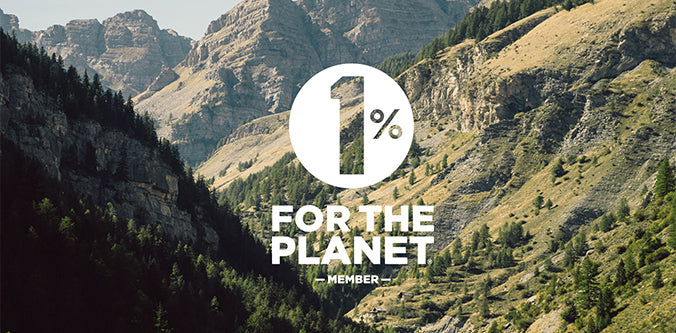La via del sale
These days we take salt for granted, but centuries ago it was a matter of life or death, and where salt flowed in one direction, gold flowed in the other.
There were hundreds of salt roads in Europe, leading from the marine flats of the Mediterranean, or from major ports like Nice, to wherever the salt was needed.
And since it was vital for preserving food, salt was needed everywhere.
Salt roads crossed Poland and Czechoslovakia, traversed Tuscany, the Po valley, all of Switzerland.
In the Maritime Alps behind Nice, the different ruling dynasties of the region – the Counts of Provence, the Dukes of Savoy, the Lascaris di Tenda – sought to control and profit from the salt trade.
Salt roads carved their way up gorges and over mountains, and villages became towns, became powerful cities, thanks to the tolls they imposed on the traffic.

Today, the salt roads have mostly disappeared without a trace.
If they still exist at all they are deserted and crumbling, in some of the remotest mountains we know.
Ideal, therefore, for an adventure ride.
We rode up the road from Tende, a road which follows the course of the old Route du Sel.
Tende stands guard below the Col de Tende, which is still a key border crossing. However, it also used to be the most direct route from the salt marshes of the Camargue and Hyères to the noblemen of the House of Savoy, who ruled the Alps from Turin.

This narrow path, used since time immemorial by tribes and marauding Saracen invaders, was widened and improved by the Savoy and, at the height of the trade in the 18th century, 45,000 mules a year worked the road over the col, the majority of them transporting sacks of salt.
We rode past the town, vaulted the modern road tunnel and took the famous old road with its 48 switchbacks above it.
Halfway up, just past the ruin of a monastic refuge, the tarmac disappeared. It would not reappear for 80 kilometres or more, and there we were on the gravel.
Tende is a hard and hot and breathless climb, through pines and under towering cliffs of rock. At the top, a confluence of roads, leading to ski lifts, a chalet restaurant, and the huge abandoned barracks that used to defend this strategic strongpoint.

Behind us was France; in front of us, Italy, falling away into the valley; and along the top of the ridge, suspended between the two, another Savoyard salt road.
This Via del Sale stretched out into the high wilderness, a wilderness that used to be populated by brigands and bandits eager to relieve travellers of their precious cargo.
But we were on our own.
Up there, on top of those mountains, there was nothing, except for a painstakingly constructed rocky road swinging from col to col, descending and rising and then descending again, but rarely dipping below 2,000m.
Occasionally, a 4x4 expedition vehicle passed, with its supplies and spare tyres piled upon the roof, but that was it.

It was difficult to remember, as the light faded over that desolate high landscape and a chill wind whisked clouds around the darkening peaks, that paths generally follow the easiest possible route.
A track is a friendly thing, showing you where people have been before, and promising that you will reach a destination.
A path is a story with a beginning, middle and end. But this one seemed so hard. So obscure and hard won, and so difficult to construct, and to travel along: what unimaginable riches the salt must have brought, to make the journey worthwhile.

We had climbed and climbed all day, into a world of scorched brown grass and grey rock, and it was easy to feel the lengthening shadows populated by smugglers and thieves.
But then, as the sun set, we reached the rifugio, where climbers and drivers, riders and woodsmen were gathering for the night. Prosciutto, risotto, carne, a little human warmth, and then a dormitory bed, more food and the second day descending the Via del Sale to the sea.
This stretch was easier, and we descended through woodlands that once belonged to modern Italy’s first king, Vittorio Emanuele II. It was his family who had built this track, and his descendants who had maintained it, in part for the troops manning the high fortresses on these ridges overlooking the border.
And, for us, it was time to pick our side.
Reverting to type, we chose France, and so ascended the Passo di Tanarello and started the long descent back to the valley we started in.

Sometimes, we ride simply for sensation, sometimes for training, or to find time to think (or not to think). And, often, to explore what’s around the corner, over this hill, or that one.
But sometimes a bicycle is a time machine, one that lets us peel back the surface of the modern and sink through the layers of the past into landscapes that are not our own.
Because if we don’t, at least sometimes, wonder why the path is there – who beat this track, and for what reason? – then we may as well be on an exercise bike in a gym.
And where is the fun in that?

RIDERS' NOTES
For this section of the Salt Road, take a car or train to Tende village where you can either ride the route clockwise by starting with the Col de Tende or anti-clockwise by climbing up from La Brigue
Photography: Matt Wragg // Words: Max Leonard
Rifugio Don Barbera 2079m, Briga Alta, Province of Cuneo, Italy



















